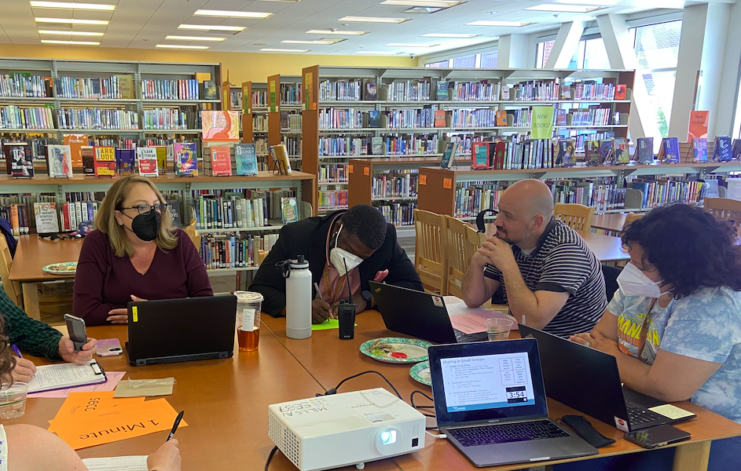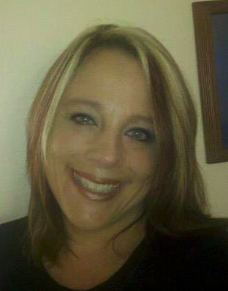
The Power of Our Why
I remember sitting at my desk before the first bell of the 2021-2022 school year rang and just looking at my classroom. I waited for the excitement to kick in. It didn’t. Instead, I felt a sense of loss and anger. Anger over losing nearly two years of noisy days filled with chaos, laughter, frustration, and being present with my kids.
I knew that I wasn’t returning to the normal I knew, but none of us knew what we were returning to. The bell rang, and there they were. My students were finally home. Noisy, laughing, and ready to start the day. In the 30 seconds between the warning bell and the start of class, every emotion happened. That day started one of the craziest, painful and amazing school years of my career.
As the Health Academy Lead at De Anza High School in West Contra Costa Unified School District, I knew that I wanted to approach the year helping my students and colleagues discover the power of their “why.” Our students were struggling because, as adults, we were struggling. Both my students and my colleagues needed to reconnect to one another and feel secure again after eighteen months existing through a zoom screen.
My students were struggling trying to balance school, work, and living in a new normal. They were overwhelmed and ready to give up. In response to what I was seeing, I slowed down and addressed students’ social-emotional needs in order to create an environment conducive to learning. I let go of structures that I “had to have” in a college course. I allowed assessment retakes for the first time and I gave extensions. A lot of them! I threw out everything I’d ever known about teaching, and I asked my students, “what do you need from me?” They needed me to remember that:
- They were high school students.
- They didn’t all learn at the same pace.
- More than anything, they wanted to make it.
I wanted to find out more. In class, I asked my students, “What is your biggest fear?” They told me, “Failing you.” Those two words broke me. That day, my students became the teachers. I let them know I heard every word. I told them, “I see you, I am here for you, and I honor your struggle. We will slow down and do this together.”
I watched students who had struggled begin to exhale and just “be” in that moment. My students needed to be reassured that mistakes were ok, that mistakes are part of learning, and that they could use those mistakes as motivation to keep learning. Every period that day, I asked the same question. And listened. They told me what they needed. In the days following, many told me they felt safe, loved, and heard. Once they felt safe, loved, and heard, they were able to find their “why” for the work we did together.
I began to design learning experiences that were founded in how my students learned best, and what they needed at that moment– not just academically. Some days, it was a simple reassuring look, an opportunity to laugh at something ridiculous, a hug, or just sitting side by side, working together in silence. My students and I embraced learning together and celebrated everything, including our mistakes. That meant I had to step out of my comfort zone and let my students and my academy colleagues see my own vulnerability.
At the same time that I was slowing down for my students to meet the needs in my class, my administrator was slowing down and noticing data that showed a school-wide need to focus on literacy. We had assumed that students were at similar reading levels as they were in years prior, but they weren’t. We had to come together as a collective and meet our students where they needed us most.
When I took on the task of implementing literacy scaffolds, I realized that many of my students were falling behind. As a teacher of a rigorous content area in which rigor is the norm – college-level medicine and science – I needed to figure out how to meet my students at their level while continuing to uplift the importance of understanding the material.
This was a second “ah-ha” moment for me. It was a big one, because I realized that this is something we don’t do at the college, scaffolding literacy, and yet we now need to do this at the college level.
Feeling stuck, I collaborated with my fellow academy lead as part of our Instructional Leadership Team’s inquiry. I shared with her my vulnerability and dilemma.
She shared with me a graphic organizer that she was using in her law classes. This allowed her to take a smaller sample of the reading and go deeper with that “chunk” to unpack what they were learning.
When I tried using the graphic organizer, I found that my students were able to trust their instincts, and their learning became deeper. I even had one student who never speaks up become the first to volunteer to read. For me, it was so profound. This student had her own challenges, and yet she felt safe enough to overcome those challenges, put herself out there, and create her own public learning moment.
That, in turn, gave agency to my other students to be public learners as well.
I realized the work we do in our Instructional Leadership Team isn’t just about the work we do with our colleagues. It is about the things we are taking into the classroom and sharing with our students, which they in turn share with their classmates. All together, we are paying it forward.
By honoring that we weren’t perfect, that we struggled, and that we deserved to be given grace, my colleagues and I allowed ourselves to remember that our students were right there beside us. If we can’t handle our own mistakes, how can we expect them to? By building this culture of Public Learning, we became stronger together and felt safe to try.
It wasn’t easy for my students and me. We made mistakes, we asked for and gave grace, and together we created a new normal. My work with Lead by Learning and my ILT helped me realize that it’s okay to not focus on perfection and the finish line, but to learn from my challenges and put myself out there – fueled by the knowledge that my work matters in the classroom and how much my students matter to me.
My grandmother used to tell me that, in order to forge new beginnings, you must honor where you’ve been. For me, that journey embraced a path that my students and I created together: honoring their needs, where they were coming from, and where they were going. I found joy in experiencing that journey walking beside them, guiding them, and cheering them on. By helping my incredible students discover their own “why,” I rediscovered my own.
 Fatham Riordan-Ng has been the Health Academy lead for De Anza High School since 2015, and currently teaches as an adjunct professor for Contra Costa Community College, and has taught vocational medicine for the past fifteen years. In addition to leading her site’s largest academy, Fatham continues to work to uplift the importance of promoting Career Technical Education and Linked Learning in public schools. In her free time Fatham enjoys reading and spending time with her family and friends.
Fatham Riordan-Ng has been the Health Academy lead for De Anza High School since 2015, and currently teaches as an adjunct professor for Contra Costa Community College, and has taught vocational medicine for the past fifteen years. In addition to leading her site’s largest academy, Fatham continues to work to uplift the importance of promoting Career Technical Education and Linked Learning in public schools. In her free time Fatham enjoys reading and spending time with her family and friends.
